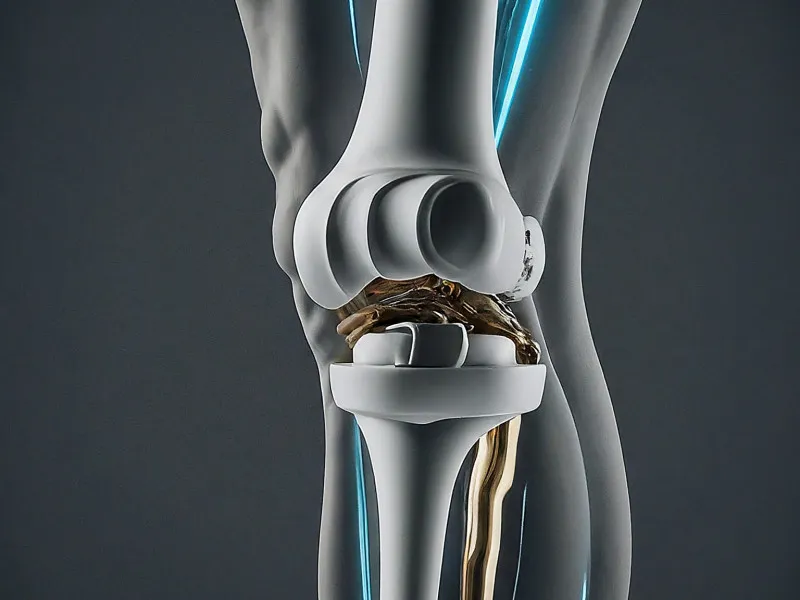
Orthopaedic surgery, especially knee arthroplasty, has witnessed transformative advancements. This blog explores these developments, focusing on the latest innovations and future prospects in knee replacement surgery.
Current State of Knee Replacement Surgery
Knee replacement has revolutionized treatment for severe knee arthritis. Traditional methods involve replacing damaged knee joint surfaces with artificial components, significantly reducing pain and enhancing mobility.
Recent Innovations in Knee Replacement
-
Customised Implants and 3D Printing: A significant advancement is the development of customised implants. 3D printing technology creates implants that match a patient’s knee contours, offering a more natural feel and durability. Custom 3D knee implants, once considered a significant advancement, have limitations. They don’t account for the movement kinematics of the knee joint. A more effective approach involves using a wide range of implant sizes combined with a focus on replicating the natural kinematics of the knee. This method ensures a more functional and natural movement post-surgery.
-
Robotic-Assisted Surgery: Robotic technology enhances precision in surgery. Enhanced visualisation and accuracy in implant placement lead to more natural knee movement and potentially quicker recovery. While robotic technology enhances precision, it has its limitations. It’s crucial for the technology to be accurately guided, as incorrect data input can lead to misplaced implant alignment. Additionally, robotic surgery often requires extra pins and incisions in the bone, which can increase the risk of complications, including reported cases of bone fractures.
-
Minimally Invasive Techniques: Surgical methods have evolved to be less invasive, involving smaller incisions and less tissue disruption, leading to faster recovery.
-
Advanced Pain Management: Improved post-surgery pain management techniques like nerve blocks and localised drug delivery systems enhance comfort and expedite recovery.
TWIS-TKR: Revolutionizing Knee Replacement
The introduction of TWIS-TKR (Turn With Intelligent Stability Total Knee Replacement) marks a significant stride in knee replacement. It offers a custom kinematic rotation alignment for a more natural and responsive joint function. TWIS-TKR’s sophisticated alignment and intelligent stability features provide a dynamically stable joint that adapts to various movements, ensuring unparalleled customisation and personalisation in knee replacement surgery.
Benefits and Limitations of Technological Advancements
Patients benefit from enhanced mobility, stability, and faster recovery with TWIS-TKR. Clinical studies indicate improved functionality, resembling a healthy knee’s kinematics. However, the use of robotic assistance, while increasing precision, carries risks, including potential inaccuracies and increased complications like bone fractures.
What’s Next in Knee Replacement?
-
Regenerative Medicine: Research in regenerative medicine, including stem cell and growth factor use, holds promise for knee cartilage regeneration, potentially eliminating the need for total knee replacement.
-
AI and Machine Learning: AI and machine learning integration in surgical planning and intraoperative decision-making are refining surgical outcomes, offering customised procedures.
Final Thoughts
The field of knee replacement is evolving rapidly, with innovations aimed at improving outcomes and implant longevity. The integration of regenerative medicine, AI, and biotechnology promises more personalised and effective treatments.
FAQ Section
What makes TWIS-TKR unique in knee replacement?
TWIS-TKR’s custom kinematic rotation alignment offers a natural joint movement, with intelligent stability features adapting to individual patient kinematics.
How does robotic assistance benefit knee replacement surgery?
Robotic assistance provides precise implant positioning but requires accurate planning and execution to avoid potential risks.
What risks are associated with robotic knee surgery?
Robotic surgery can increase the risk of complications, such as bone fractures, due to additional surgical steps.
What future advancements are expected in knee replacement?
Future advancements include regenerative medicine, AI and machine learning integration, biodegradable implants, and sensor-integrated implants.
How does TWIS-TKR improve patient outcomes?
TWIS-TKR enhances mobility, reduces recovery time, and lowers complication rates, leading to high patient satisfaction.
